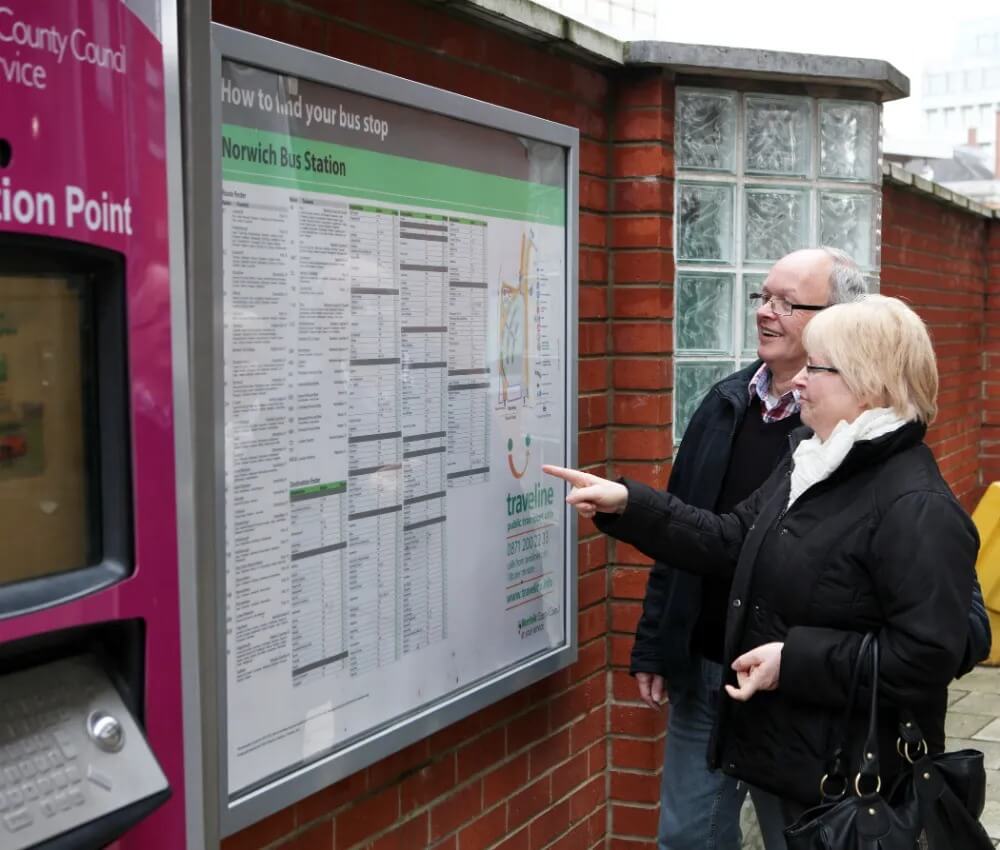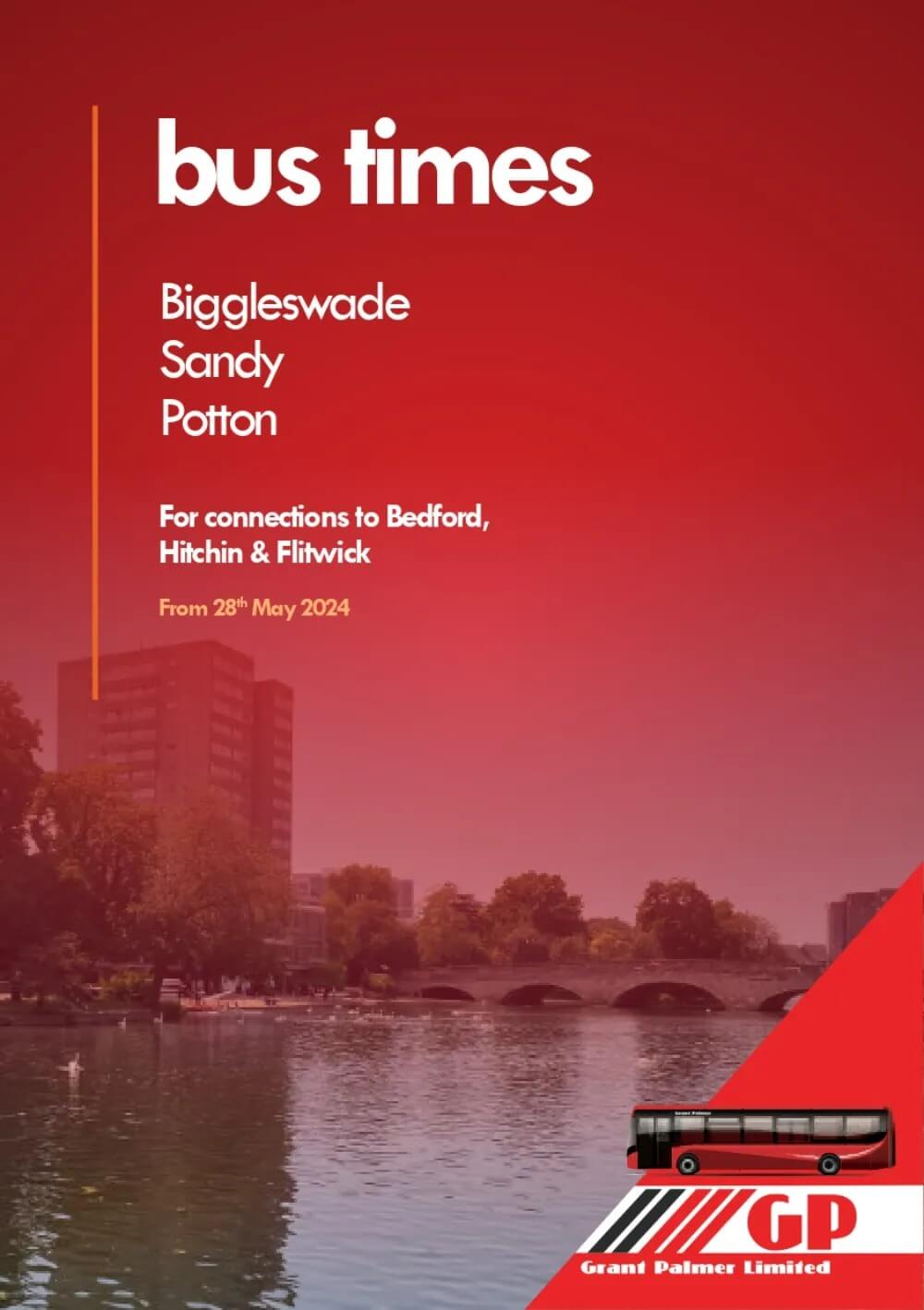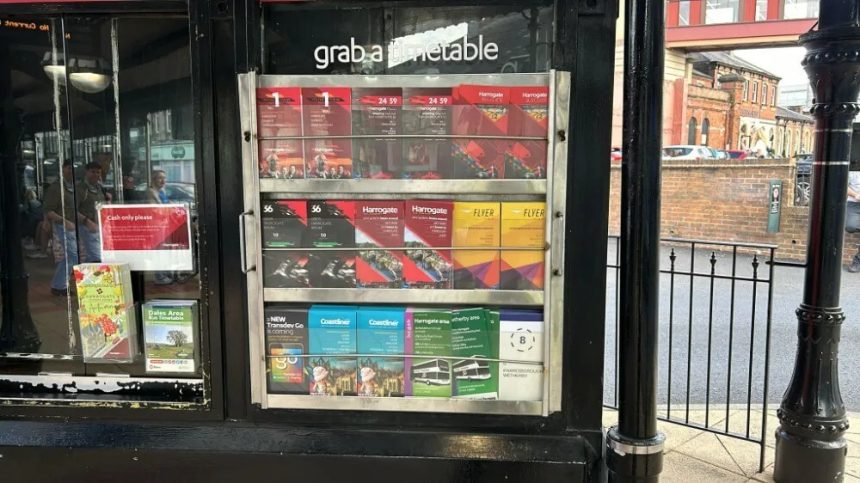The 600-year-old-plus medium of print is rapidly being erased by digital in every aspect of life and that includes in the coach and bus industry. Indeed, a new generation has grown up seeing print as archaic.
The many advantages of digital over print are clear when it comes to passenger information.
Not least of all, initiatives such as Bus Open Data Service are feeding solutions such as Google Maps and similar, and operator apps, simplifying journey planning and making clear to potential passengers their alternatives to the car.
Real-time information allowing live updates on your phone or at the bus stop, and e-ticketing are among the possibilities that have been transformative for the bus sector in recent years. Indeed, digital is essential if we are to attract younger passengers.
The digital versus print scales were further tipped in favour of the new medium during the COVID-19 pandemic when concerns over virus transmission resulted in cessation or pausing of bus passenger literature in many cases.
However, several in the industry are bucking the trend and fighting back against the demise of print. While they would concede the trend away from print and towards digital will inexorably continue, they insist a place remains for timetables and other customer information on paper.
Indeed, the statistics appear to suggest that operators ditch print at their peril.

A survey by Transdev Blazefield, conducted between summer 2022 and spring 2023, found 65% of customers felt it was important that the operator produced paper timetables. In addition, it reported that 22% of customers made use of print timetables, 10% of them exclusively relying on paper.
Bedford-based operator Grant Palmer’s latest customer survey showed that 86% valued printed publicity and more than 70% were able to pick up a timetable locally.
Meanwhile, a survey by Transition Tavistock’s Travel Action Group in October 2023 reported that 13% of passengers primarily used print as a source of timetable information.
Print info ‘goes down a storm’
Claire Walters, Chief Executive of Bus Users UK, says her charity receives plenty of feedback on the use of print and adds: “Printed information always goes down a storm.
“Whenever we do an on-street event and there are leaflets, people hoover them up; they can’t get enough of them.”

Alex Warner, Chief Executive of Great Scenic Journeys, which accredits and promotes bus routes, agrees, adding that the proliferation of online information can often make print stand out more.
“The problem with online is you’re not concentrating your mind, whereas, if you’ve got something in print, you actually invest the quality time to sit there and read it,” he argues.
Claire warns against alienating a section of the potential market. “There’s a huge and growing problem with digital exclusion,” she says. According to Uswitch, in 2023, around one in five adults over-65 did not have a smartphone.
Operators bucking the trend
Taking note of its own survey results, Transdev Blazefield is an example of an operator which continues to make good use of print. Another is Grant Palmer, which produces three A5 booklets with print runs of up to 5,000 every three months for its services.
It says these are becoming increasingly popular. “Printed timetables are valued by our customers,” says Grant Palmer Commercial Manager Thomas Manship.

“In many parts of rural Bedfordshire, phone signal is incredibly poor.
“I’ve never understood why larger operators fail to print timetables. Not all customers will have the technology to use a website or journey planner.
“If we look to other sectors — Alton Towers, for instance, continues to print park maps to encourage new customers and assist existing visitors. Why should we as an industry turn these customers away?”
Reading Buses is another operator which does not rely on digital alone. Marketing Manager Jake Osman says: “While our app and website are extremely popular, there are still many people who prefer to have something physical.
“And it’s not just the older generation; our work at the University of Reading campus in September always sees thousands of leaflets taken by students who like to have them in their rooms or pinned on noticeboards, etc.
“We also don’t want to disenfranchise anyone, whilst still trying to move to a more paperless environment where possible.”
He says the municipal operator has a system in place to replenish the timetables each evening on every bus.
“We do see customers consuming large amounts of leaflets — especially for the first few weeks after a timetable change,” he says.
“We also print adverts for our bus stops to ensure customers are kept informed about things such as the service itself (frequency, other benefits), our app and the best products for them to save money.”
The operator is encouraging users to switch to digital where possible, but Jake adds: “While we have seen a small decline in printed timetable usage over the last few years, I would estimate it is only at around 10-15% as people still want timetables in their hand.”
We don’t do printed timetables anymore, because we do not find that they lead to more people using the bus, and there are environmental factors to consider – David Boden, Stagecoach East
Claire highlights that other operators still maintaining print information include Brighton and Hove Buses, Lothian Buses and Blackpool Transport.
However, for many operators, larger ones in particular, the approach reflects the current trend towards digital.
Stagecoach East, through its Business Development Director, David Boden, admits: “We don’t do printed timetables anymore, because we do not find that they lead to more people using the bus, and there are environmental factors to consider.
“We, therefore, prefer Royal Mail door-drops of a flyer with a QR link to a timetable. We find that, if someone gets something on their mat at home, it makes them more likely to then use the bus.
“For vulnerable people and the small number of customers without a smartphone, we will, of course, post out A4 printouts of timetables.
“We have also produced them for parish councils which are prepared to push them through local people’s doors for us. It is all a question of choosing the best methods to encourage bus use.”
Northern Ireland operator Translink says of its general policy: “We see increasing demand for digital information solutions for our customers.
“There is still a role for print products for specific customer groups, or particular customer touch-points, for example at bus stops, onboard services and at stations. We publish all our timetables on our website. These are offered with a function to download for passengers who prefer to have a hard copy.”
First Bus, Go-Ahead and McGill’s were also offered chance to comment but did not respond.
The environmental argument
When it comes to those environmental concerns, Thomas points out that the bus sector’s very existence is offsetting the environmental impact of cars.
He adds: “All of our timetables are printed on recycled paper and we work incredibly hard to reduce wastage, adjusting print runs and targeting excess guides for maildrops and on bus distribution.”
On this score, Jake adds: “All our timetables are printed on paper from a sustainable source and can be recycled, so we feel that there is limited harm to the environment.
“There is also an argument that running vast data servers to power websites is bad for the environment and yet that is the way the world is headed.”
Print as a powerful marketing message
Admittedly, print serves some routes better than others — for example, those in tourist areas where racks in places such as hotel lobbies and tourist information centres can be exploited.
When routeone spoke to Alex, he had just returned from a visit to Scarborough armed with leaflets promoting two of the local routes on Great Scenic Journeys’ roster.
His consultancy had printed and placed around 15,000 leaflets for the area for the local Scenic Explorer just a few months earlier and they needed replenishment almost everywhere.
A leaflet on a rack on a bus is marketing collateral, brand, livery, imagery, it’s a little way of bringing to life the onboard experience – Alex Warner of Great Scenic Journeys
“The benefit of leaflets is they are creating a feel-good factor and showing the bus company is on the front foot and it is engaging in its community,” says Alex, who highlights that print needs to contain a marketing message.
“Customers want more than just a timetable because they can source that online,” he says.
“They expect a leaflet to inspire them, they want pictures and inspiring words that aren’t written through ChatGPT, and a QR code for more information.
“A leaflet on a rack on a bus is marketing collateral, brand, livery, imagery, it’s a little way of bringing to life the onboard experience, which otherwise can be very bland and featureless.”
That said, he concedes that the industry has to some degree “become incapable of managing them”. He says: “In many bus companies, no one knows whose job it is to put the leaflets on the buses.”
While the availability of timetables in a digital format is invaluable, Claire ends by summing up the value of print for passengers: “It’s useful to have a bit of information about what’s available that isn’t dependent on signal or battery life.
“It’s actually sitting there in your pocket or your bag and you can go back to it as and when. People rely on a little bit of paper info as a sort of security blanket.”



























